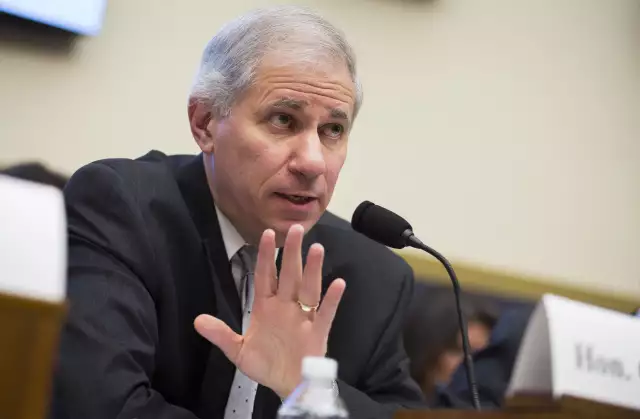Economic Uncertainty Has the Retail Real Estate Industry on Edge
The retail market’s recent rebound from the lows of 2020 has been one of the bright spots of the year in the real estate industry. After mandated shutdowns due to the pandemic led to large numbers of businesses, both large and small, closing their doors for good, many wondered how the retail sector would recover. But the industry has found its footing, even in the midst of rising inflation and with consumer confidence hitting a 10-year low.
In the first half of the year, asking rents for retail space increased significantly, and vacancy fell to a 15-year low, according to Cushman & Wakefield data. Meanwhile, economic growth rebounded over the summer as GDP rose by 2.6 percent in the third quarter, a comforting sign that the country may not be in a recession yet. However, retail economists and experts have a muted outlook for 2023 amid market uncertainty, and retailers are focusing on profitability.
While consumers have been more cautious about spending lately in light of inflation, they are still spending considerably. A survey from the National Retail Federation (NRF) found that this year’s Halloween season spending in the U.S. is expected to reach a record $10.6 billion, surpassing last year’s record of $10.1 billion. While the official numbers on Halloween spending haven’t been released yet, those surveyed said they would spend an average of $100 on Halloween candy, decor, cards, and costumes. Estimated spending on the so-called “spooky season” fell to $8 billion in 2020 and is now back, and higher, than pre-pandemic levels.
Holiday retail sales are also expected to rise this year, despite all the economic challenges the country is facing. Like last year, holiday season shopping is starting earlier than usual, and a higher amount of foot traffic at retail centers was expected in October, according to a CBRE forecast on holiday retail sales. The brokerage firm estimates retail sales in the fourth quarter of this year to jump 6.9 percent from last year to $1.48 trillion.
While sales are expected to rise, the industry will continue to be challenged by a tight labor market. A shortage of seasonal workers could cut into store hours over the holiday season as job openings, and resignations are still above long-term averages. CBRE’s Chief Economist Richard Barkham said that retail has been surprisingly resilient and is in the midst of a post-pandemic revival, “all of the companies that went bust during Covid restructured and came back strong.”
The ongoing narrative about dying malls is also starting to turn around, at least for some malls. Last week, the CEO of the country’s largest mall owner, Simon Property Group, touted the comeback of brick-and-mortar retail in his company’s third-quarter earnings call. Simon, which owns 230 malls in North America, Asia, and Europe, posted solid numbers in the third quarter, with the most notable gains in its average base minimum rents, which rose from $53.91 last year to $54.80 this year, and occupancy at its properties, which rose to nearly 95 percent, a 1.7 percent increase from the same time period last year. “I need not remind you when physical retail was closed in COVID, all the naysayers were saying that physical retail was gone forever,” Simon said. “However, brick-and-mortar is strong, brick-and-mortar retail is strong, and e-commerce is flatlining.” The latest figures from the Census Bureau show that e-commerce sales reached 507.7 billion in the first half of 2022, a 6.8 percent increase from the same time period in 2021.
So while the retail market, for the time being, is on mostly solid footing, there is reason for concern about low consumer confidence going into 2023 and its impact on the industry. Globally, retail sales growth softened during the third quarter, according to JLL, with retail sales expected to slow down further through next year in most of the country’s major markets. Retailers big and small have laid off workers in recent months in order to cut costs amid slower sales. In light of this, some retailers and proptech companies are finding ways to keep people shopping. One of those is a new emphasis by retail developers on using outdoor spaces to elevate shoppers’ experiences at retail centers.
At a panel during ULI’s annual Fall Meeting late last month, panelists explained bringing a fresh approach can be a big differentiator. “You’ve got to find that unique angle—something that is memorable,” said Steven Levin, Founder and CEO of Centennial Real Estate, suggesting owners and developers take the roofs off of retail centers, add outdoor theaters and fountains, and bring in high-profile art exhibits. One panelist even suggested getting in on the multifamily trend of adding Pickleball courts to properties. Adding more experiences to retail stores has been a growing trend, even pre-pandemic, spawning the term “experiential” retail. And it’s proving to be popular with shoppers. A study from Westfield found that by 2025, nearly 60 percent of shoppers expect that retail stores will dedicate more than half of their space to experiences rather than products.
To support retailers struggling to make rent, the country’s largest retailer, Walmart, has partnered with an online pop-up shop platform to rent space to small businesses within its stores on short-term leases. Using the online marketplace Popable, brands can sign on to leases from one month up to one year, with the option of signing a longer-term contract. Retailers are also increasingly using AI in operating their businesses. Beauty retailer Sephora uses AI tech that scans customers’ faces and recommends makeup colors and options, while home improvement brand Lowe’s is deploying robots called “LoweBots” in their retail stores to roam around and help customers find what they need.
Among the challenges faced by retailers, there’s also the unpredictable and uncontrollable factor of weather, which can play a role in impacting holiday retail sales. Not only has unseasonably warm weather impacted sales of coats and sweaters but according to the NRF, energy costs for heating and electricity are expected to be higher and could end up pushing up inflation and cutting into holiday spending. On the flip side, natural gas prices have fallen more than 40 percent, while holiday travel is expected to be higher this year and could boost retail sales.
Though there is still a lot of uncertainty about how economic conditions will impact real estate markets going into 2023, higher-end retail centers are continuing to perform better than older or lower-quality retail space. Owners and retailers will need to keep their focus on profitability and balancing between online and brick-and-mortar stores and continue to look at ways to enhance the in-person shopping experience.
The retail industry experienced maybe the toughest period in history during the lows of 2020 when stores were forced to close their doors and sales at brick-and-mortar stores plummeted. But some retailers figured out a way through and learned how to adapt to situations like the global health crisis and forced closures. With that experience under its belt, the battle-tested retail industry is probably better prepared to weather the downturn.






